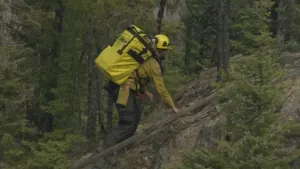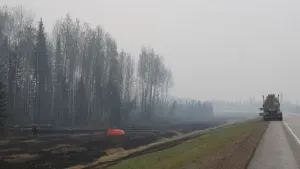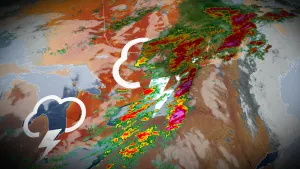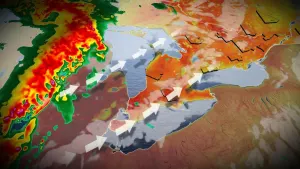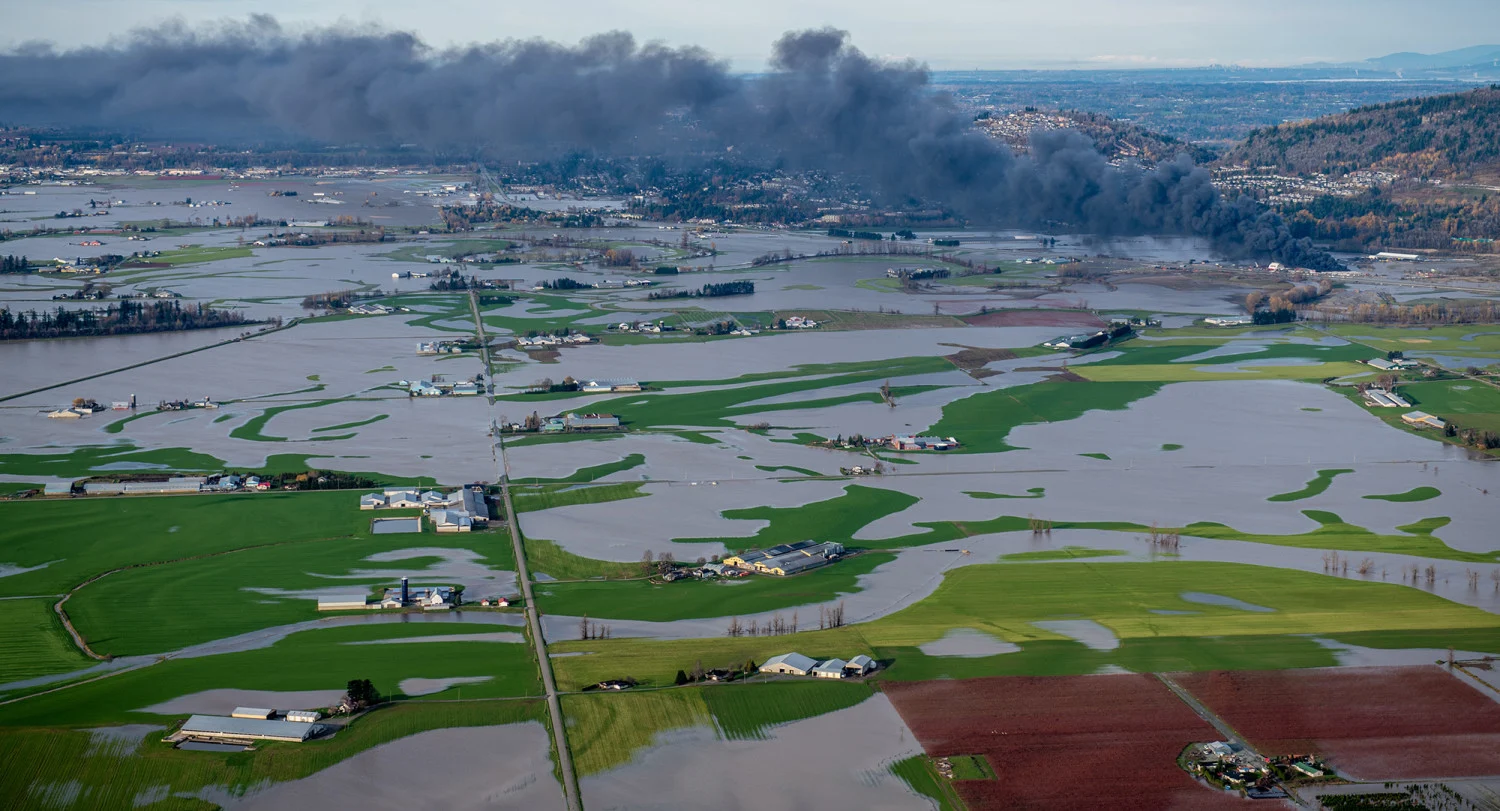
The year through hell: Fingerprints of a changing climate in B.C.
B.C. has had a harder time of it than any other province in terms of weather disasters this year.
Catastrophic flooding across southern British Columbia triggered mudslides that claimed the lives of four people, destroyed the homes of thousands and crumbled infrastructure, sweeping away bridges and vast chunks of roadways, making intrusions into hundreds of sections of pavement. The flooding also killed hundreds of thousands of farm animals, and impacted some of the province’s most fertile farmland.
The deadly floods caused great upheaval in the Fraser Valley, disrupting major supply chains in the process. Other remote regions of the province have been transformed forever, including the Indigenous communities along Highway 8, where vast sections of the roadway have disintegrated.
While the impact of this extreme weather is vast and complex, the recipe for such a flooding event is deceivingly simple. It comes down to a few factors: how hard it's going to rain, how much snowmelt will occur, watershed conditions such as soil saturation, and other antecedent characteristics like river flow rates. The extreme forecast was accurate; nevertheless, the vagaries of the impacts remained. No one foretold the scale of devastation lurking ahead.
But to make sense of an extreme weather event like the B.C. flood, you have to understand that the atmosphere of 2021 is behaving like baseball player Barry Bonds did in 2001. If Bonds didn't use performance-enhancing drugs, he still would have hit a fair amount of home runs. But statistically, over an entire season, the ball flew a few metres further and left the park more often than it otherwise would have.

Climate change is enhancing the performance of certain types of weather. Our changing atmosphere has increased the probability of extreme heat and flooding. Climate change is transforming the classic flood recipe, providing more opportunities to produce extreme weather.
So was the sopping wet November climate change? It's more complicated than that, I'm afraid. The story begins this past summer.
SUMMER 2021
Just five months ago, Canada's deadliest weather event ravaged British Columbia, claiming nearly 600 lives and becoming the catalyst for one of the most destructive wildfire seasons in provincial history.
868,203 hectares burned
1610 wildfires, 181 evacuation orders
Two-month provincial state of emergency
SEPTEMBER 2021
In early fall, long after Lytton burned to the ground, satellites captured the charred landscape; myriad burn scars littered across the terrain. After all the organic matter combusted, with root systems in tatters, a layer of water-repellent compounds remained, allowing the landscape to behave more like asphalt.

EARLY NOVEMBER 2021
The locals know. La Niña is good for the ski business. The waters cool west of Peru and trigger an atmospheric domino effect, altering the mean position of the jet stream, the narrow current of winds that carves out our storm track. It means moisture-laden storms gravitate towards the Pacific Northwest.

Meanwhile, snowfall was piling up in a fury across higher terrain. You couldn't dream up an atmospheric configuration to bring more moisture towards the South Coast. The Pacific Decadal Oscillation, a sea-surface, atmospheric connection in the North Pacific, was sharply negative. Along with La Niña, this setup favours a wet British Columbia.

This particular catastrophic atmospheric river, a narrow region of enhanced precipitation stemming from the tropics, had deep tropical origins. That is where sea-surface temperatures are above average. A warmer atmosphere and ocean can hold more water vapour, making climate change palpable.
Snowfall near 100 cm at the Coquihalla Summit primed the antecedent conditions for impending disaster. The ample snowfall sitting in situ would turn a high-end flood event into a historical one in a matter of hours.

THE HAWAIIAN PINEAPPLE EXPRESS: ORIGINS OF THE ATMOSPHERIC RIVER
As the current meteorological and climate conditions stand, another danger looms. We have snowfall enveloping the burn scars. In the heart of winter, it's common to get several days of high freezing levels and alpine rain, but the deep snowpack tends to act like a sponge. This early season snowpack was fragile, and the temperature spiked up to 10°C in the alpine regions. The result was 10 cm of liquid water equivalent melted off the terrain and flowed rapidly downhill.
You've seen the rainfall amounts. They're staggering, but for some, not unprecedented. Floods severed Highway 1, the route that bisects the Fraser Valley, in November 1990 as well. That month Hope recorded 900 mm of rainfall. But for Victoria and Abbotsford, November 2021 goes down as their wettest month on record, and that's a big deal.

Not only did the atmospheric river drench the South Coast, but it also spilled over the Coastal Mountain Range into the Interior watershed, turning recent fire evacuees into flood evacuees. Thyne Station, a forestry weather station, tallied 250 mm of precipitation through the fateful weekend; consequently, putting tremendous stress on the Tulameen River, among others. Lytton and the surrounding area picked up close to 100 mm of rainfall, an extraordinary outlier for the dry Interior. For reference, that's about 1/3 of the annual rainfall, falling on a single weekend.
THE TROPICAL-PUNCH
Nine atmospheric rivers, each oscillating in origin from Asia and Hawaii, pummeled British Columbia in November and twelve since October. These rivers transport double the annual flow of the Amazon River and often siphon up moisture from Hawaii.
Some possess much deeper tropical origins — the atmospheric river in late November travelled over eight thousand kilometres away from Southeast Asia, spawning in the Indo-Pacific Warm Pool.

The warmest sea surface temperatures on the planet swirl north of Australia, and this region has seen pronounced warming and expansion over the past few decades.
CLIMATE CONNECTION?
Add it all up and a warming atmosphere will be a conduit to carry more moisture, and scientists are studying the impacts of a warmer planet on the behaviour of atmospheric rivers. Some global data voids naturally exist — but the most studied region for atmospheric rivers includes North America.
Scientific research reveals increases in atmospheric river frequency and fury, with more precipitation extremes across North America. Yet, much remains to be understood about atmospheric river dynamics and how a warming planet will alter circulation changes and the precipitation efficiency of these rivers.

A warming climate does not directly trigger extreme weather events — but makes certain weather events more probable and intense. The heat dome in June certainly could have happened in a world without climate change but would have been far less deadly. Each additional extreme event gives us an extra data point, and these single events begin to populate our changing climate landscape right before our eyes. A warming climate will likely alter flood events in the future, with less snowfall to melt the spring run-off might be subdued, while furious fall storms provide an enhanced risk.
B.C. has been dealt a terribly rough hand, but it’s highly unlikely that we see similarly catastrophic events in 2022. There’s something to be said about the fragility of British Columbia with respect to a changing climate; the rugged terrain and changing, distinct seasons provide ample opportunity in the future to create severe weather conditions.
It’s likely that more in-depth analysis will show the conditions leading to this disaster were made more likely due to how the climate has changed.
Thumbnail credit: Martin Gregus @mywildlive








